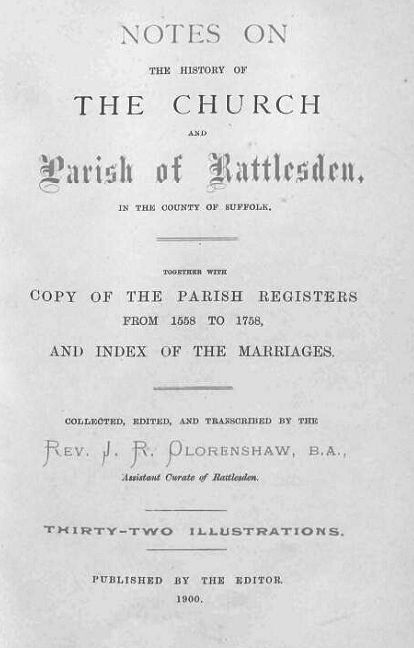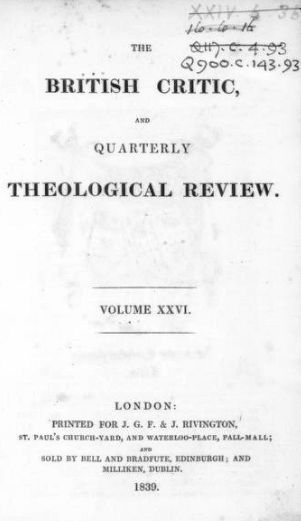How we can track where we come from
There’s no doubt that the Nunn surname emanates from the English county of Suffolk.

The publication, Notes on the History of the Church and Parish of Rattlesden, that Tuck references.
I’ve long held the view that it’s likely that most of we Nunns are related, some more closely than others, of course.
It would be the same for many family names in other districts.
It was really interesting to stumble over an article published in 1900 that discusses the Nunn surname. It focuses on the village of Rattlesden which is just to the east of Bury St Edmunds.
While my family mostly emanates from Chevington, that village is only about 18 miles (30km) from Rattlesden, but to west of Bury St Edmunds.
It confirms the spread of the Nunn surname in the area.
The article was written by one William Henry Tuck, known as W.H.Tuck, who primarily was known as an artist but who also obviously was also a scholar/historian/journalist.
He was born in Norfolk but grew up in Tostock, Suffolk, where his father was a minister. He seems to have mostly lived in Suffolk and died in Bury St Edmunds in 1922.
Tuck looks at the history of Rattlesden, discusses a number of interesting points, and references the Nunn surname because it dominates the parish registers for a considerable period of time.
He credits Rev Olorenshaw for the way in which he updated the records in his Notes on the History of the Church and Parish of Rattlesden and how they reveal much about the people who went before.

The British Critic and Quarterly Theological Review to which W.H.Tuck refers in his article.
Read on about Rattlesden
The Ipswich Journal 27 October 1900, p5
Two centuries of a Suffolk village.
Interesting memories of the past.
The village of Rattlesden, here referred to, lies in a valley which, up to about A.D. 1060, was a tidal armlet, and navigable with shallow craft from the rivers Orwell and Gipping.
A meadow close by the church has always gone by the name of “The Orwell Field,” and up to the beginning of the century terns and other such birds nested, and certain coast insects are still to be obtained.
The parish registers are unusually well preserved, and the Rev. J.R.Olorenshaw, well known for his antiquarian lore and general research, has thoroughly overhauled them, and has incorporated those from 1558 to 1758 in his history of the village.
How our neighbour at Scarning, Dr. Jessopp, would revel in these mute records of that wonderful two hundred years, which begin in the first year of Elizabeth’s reign, shortly before she visited the stately halls of Christchurch Mansion, Rushbrook, and Helmingham, taking the adjoining parish of Woolpit on her way, down to the last year but two of the reign of George 11., celebrated for the battle of Hochkireh, when Frederick the Great was defeated by Marshal Daun during the Seven Years War.
Glancing through the registers, one is struck by the large number of names – especially female, which have quite died out.
Of course a great number are taken from the Bible, such as Abakuk, Abednego, Bezaleel, Bartholomew, Joel, and Sephaniah, while we find Abigail, Damaris, Thamur (or Tamar), Miriam (Mirabel), and Priscilla.
The saints, too, supply us with Theodosia, Tryphena, Ursula (Urslye), Cecilia (Sisley or Cicely), and Sherma, while the old Puritan names and a few old English crop up, such as Hester, Honour, Faith, Christian, Bridgett, Griselda, and Varny.
The surnames are not very remarkable, except in the spelling of some of the compound ones.

A snippet of the 1900 article from the Ipswich Journal 27 October 1900.
A name that consistently runs through the registers down to our time is that of Nunn.
Originally a Biblical name, it was altered from Nun to Nune, and subsequently the second “n” was added.
But it is not always safe to go by the register, as names occur from time to time in a remarkable way.
In 1561-2 we find the names of “Parker” and “Wild”, but it was not until 1833 that the present family of Parker purchased the manor of Clopton Hall, and in 1892 the Rev. E.J.Wild became rector.
In 1636, thirty years before the great outbreak, there were four deaths from the plague in Rattlesden, which place seems to have been a favourite one out-town marriages, for, in 1654, one George Grome, a justice of the peace, united five couples, but whether legally or not we are unable to say.
In 1774 the fen was drained and better roads were made in this part of the county.
The church is the great glory of the village, with its magnificent hammer-bean roof.
This roof, together with the roofs at St. Mary’s (Bury), Woolpit, Tostock, and Wetherden, are all illustrated and described in the “British Critic and Theological Review” for 1839-41, Vols. 29 and 31.
Space will not admit of a further notice of Mr. Olorenshaw’s book, which is a valuable addition to East Anglian county history.
W.H.Tuck.
In researching the Nunn family myself, I was struck by the similarities I noticed in my area of interest.
With the Nunn surname, I also discovered the spelling variants Tuck mentions. Nun, Nune as well as Nunns, but Nunn becomes the most consistent spelling.
Interestingly, I’m unable to find out much about Rev Olorenshaw other than he was an assistant curate at Rattlesden some time around 1891.
